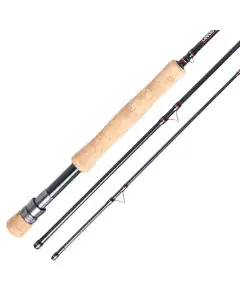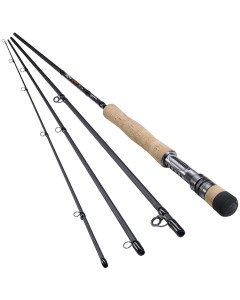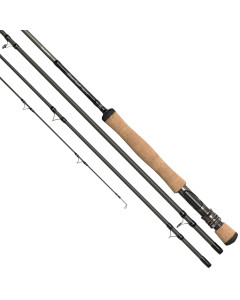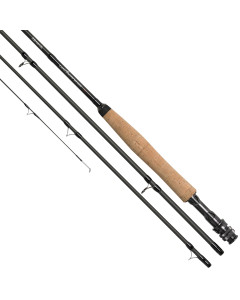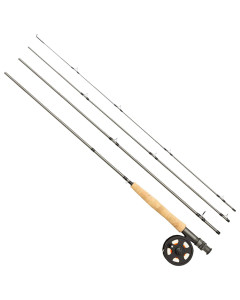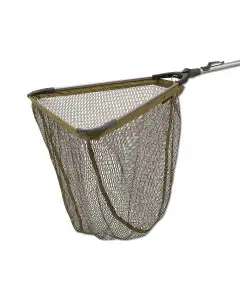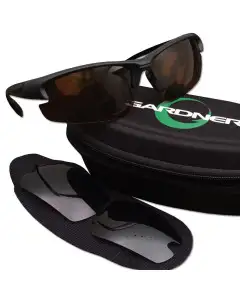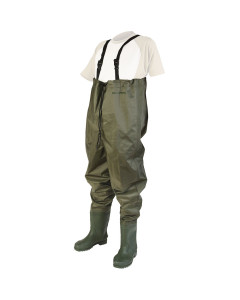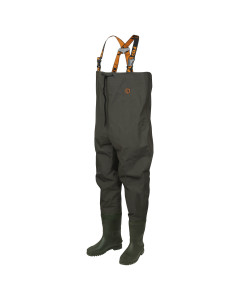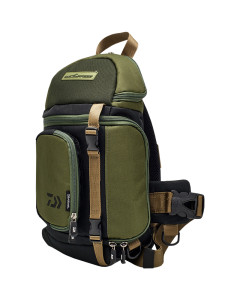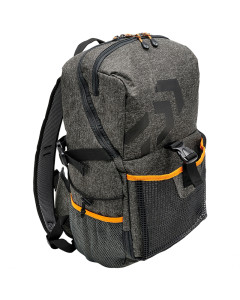This is a demo store. No orders will be fulfilled.
What you need to start Fly Fishing!
This entry was posted on by Guest Writer

Fly fishing is one of the oldest angling disciplines and involves using an ultra lightweight artificial lure that mimics flies and aquatic insects to attract and catch fish such as Trout, Grayling and Salmon. Although very different to your conventional fishing methods, it is a great technique to have at your disposal, as it is a very busy and rewarding method!
Spring is a perfect time to give fly fishing a go, as it is the height of the fly fishing season and trout are particularly active at this time of year. Here we go through all the essential bits of fly fishing tackle you need to start your fly fishing adventure.
Fly Fishing Rods
A fly rod is probably the most important part of the set-up, and should feel like the extension of an arm to the fly angler. These fly fishing rods are incredibly flexible to aid with the casting technique, but have plenty of power to land even big trout with ease and similar to conventional fishing rods are available with different actions and in a variety of sizes depending on the size of fish you are targeting.
When starting fly fishing, a slow or moderate action fly rod will help you hone your casting technique, whereas a moderate to fast action rod is better when you are confident with your casting technique. A 5 weight or 6 weight rod in anything from 7 to 9ft in length will cover you for most fly fishing situations from small rivers to large reservoirs.


Fly Fishing Reels
These are similar in style to centrepin reels but equipped with a drag system which helps when playing large fish. These fly reels are often made of lightweight plastic or aluminium to ensure they are both incredibly lightweight to perfectly balance with a fly fishing rod whilst being incredibly durable.
These fly reels often operate on cassette systems which allow you to change spools quickly and easily to suit conditions. Despite their size, they are able to store an incredible amount of line, and thanks to the smoothness of the fly reel you are able to strip line easily for casting, but retain enough power for playing large trout and salmon.


Fly Line
As with all styles of fishing, your fly line choice is dependent on a range of factors including target species, water clarity and weather conditions. When you are fly fishing, there is no weight on the end of the line, just an incredibly lightweight fly. This is where your fly line comes in, as it is weighted. These fly lines are available with different densities, so you can present fishing flies either on the surface or at different depths in the water column. An ideal starting point is to use a floating fly line as it is the most versatile.
Fly lines also vary in taper to assist with casting, with a weight forward taper (WF) being the easiest to start with. Fly lines come in a variety of colours, as they need to be visible in even the lowest of light conditions, so you can spot where your fly is. At the end of your fly line, you need to attach a fluorocarbon leader. This is virtually invisible to fish and allows fish to take your fly with full confidence.


-
-
-10%
-
-
-
-
-
-
Fishing Flies
Different types of fishing flies can come into play depending on the time of day or year, as picking flies that are more likely to be around will not raise suspicion from fish. So carrying a variety of flies is essential and the main types of fishing flies to start with include...
Surface flies: Designed to float on the surface, these flies mayfly imitation, daddy long legs imitation, and a sedge fly.
Buzzers, Nymphs & Emerging Patterns: These flies are for fish under the surface eating hatching flies.
Bright Attractor Flies: These flies aim to attract fish into eating them, but don’t imitate anything natural... such as an orange blob!


Fly Net
Although essentially very similar to your conventional landing net & handle, there are a few features with a fly net which make it perfectly suited for fly fishing. The first of these is the overall size and length of the handle, as you are fishing on the move, the handle on these fly nets is incredibly short and telescopic so you can increase the length of the landing net handle is needed.
Another is most fly nets feature a folding frame, allowing you to keep the fly net clipped until the netting stage, and quickly unfold the net with a click of a button. These fly fishing nets also feature a rubber latex mesh that not only dries quickly, but also prevents you snagging hooks in the mesh.


-
-18%Monthly Deal
Polarized Fishing Sunglasses
Probably one of the most important essential items in your fly fishing tackle. These polarized fishing sunglasses allow you to clearly see fish in the water. These fishing sunglasses cut through the surface glare and are perfect when you are trying to locate fish that would otherwise go unnoticed.
These polarized fishing sunglasses are available in a range of frame designs and lens colours to suit the anglers preference, and are also a great addition for any anglers fishing tackle, whether you are stalking carp on a lake or fishing for barbel on a gin clear river.


Fly Fishing Vest
A Fly Fishing Vest is great for holding all your fly fishing essentials, which you need for a days fishing, and allows you to keep it all close to hand.
These Fly Vests not only offer an extra layer of warmth and are great for storing fly boxes. They also feature zingers to allow you to keep fishing tools such as forceps, fly nets and priests safe, so they don’t fall in the water. Also for them days that the trout are being picky, most fly vests come equipped with a fly patch, so you can keep your favourite fly patterns attached for quick changes.


Fly Fishing Waders
A must have for many fly anglers, as a lot of fishing especially on rivers and large lakes, you will need to wade into the water to access the best fishing spots so you present your fly to feeding fish.
Not only that they allow you to better position yourself for a better casting angler allowing you to improve your accuracy and presentation. These fly fishing waders are specially designed with grips to ensure you are safe and secure when standing in the water.
There are two types of waders available, chest waders or thigh waders. Chest waders are the best option for the fly angler as they allow you to wade into deeper water with full confidence.


Fly Fishing Luggage
Lightweight is the name of the game, when it comes to luggage for fly fishing, as you need to keep everything close to hand, but with plenty of storage to carry all your fly fishing essentials. Therefore, rucksacks and shoulder bags are best as they allow maximum storage capacity whilst being lightweight and easy to transport when covering a large amount of different fishing spots.
For fishing flies, the best way to store them is by using a fly box, these come in a variety of sizes and allow you to carry up to 500 fishing flies to a session of all sizes from small buzzers to large damsel fly patterns.


